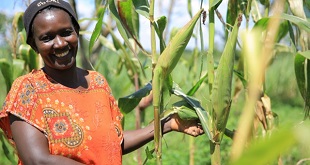Sugar cane zoning has failed
Evidence from around the world shows that sugar zoning is a bad move and may not achieve the desired results. From Africa to Asia to South America, sugarcane zoning has on many occasions failed, forcing governments to retreat.
For instance, in Kenya, Sugar Campaign for Change (SUCAM), a sugar advocacy group said it does not support the sugar zoning proposal in the country’s draft Sugar Regulations, 2018, calling the move “illegal and anti-competitive” that would require an express waiver by the Competition Authority.
The draft regulations, now under review by the Agriculture Ministry’s Sugar Industry Taskforce, propose that sugar cane farmers be obliged to sell their produce to specific sugar mills, with a single buyer for each area dictated by regulation.
The policy was re-introduced in the country in the 1990s but many farmers delayed and failed to harvest cane due to delayed payments, currently totaling to Kshs 2.6bn, causing losses and hit the development of ratoon crops.
For that, many farmers, who sold their produce to major sugar producing companies like Mumias, SONY, Chemelil, Muhuroni and Nzoia, abandoned cane farming which greatly affected the livelihood of the sugar-dependent communities.
SUCAM also said the zoning law is a breach of COMESA rules that prohibit the introduction of a contract; agreement or understanding that is anti-competitive or substantially lessens competition within the common market.
The lobby group also highlighted that the regulation also breaches the World Trade Organization Agreement on Agriculture, which encourages the use of domestic support policies to maintain the rural economy and increase market access and which do not distort trade or pricing.
However, this is not the first time that Kenya is trying to introduce the sugarcane zoning policy despite having failed to achieve the desired results in the first attempt. East Africa’s largest economy implemented sugarcane zoning in the Nyanza Sugar Belt in 1973.
However, the move saw Miwani and Muhoroni Sugar Factories operate below installed capacity while Chemelil Sugar Factory had excess out-growers. This eventually dwarfed production capacity of Miwani and Muhoroni sugar factories to 60% and 70% which represents 30,000 tonnes and 45,000 tonner per annum, respectively.
On the other hand, Chemelil Sugar Factory produced sugar at 100% or 60,000 per annum. However, the initiative was later abandoned over the years as it proved unsustainable.
In Thailand, the two groups in the industry – growers and millers – have never had a good working relationship, influenced by several structural and policy factors, according to Nararuk Boonyanam’s study on Agricultural Zoning and Policy Conflict: Thailand’s Experience, published last year.
While the processing capacity has increased rapidly, the production of cane has not kept pace with it, explains Boonyanam.
Boonyanam says growers have frequently complained of faulty weight bridges used to under-weigh the cane and thus regularly demanded that weighing be done only on government-approved weighing bridges and not on privately-owned ones.
Also as a result of disagreements over prices, out growers have always decided to withhold their cane or divert it to molasses production (a natural product of sugarcane that is in more unrefined form than sugar).
Sugar cane zoning initiatives have also failed in Mauritius, Australia and India – some of the world’s leading sugar producers.
Out-growers views
Going forward, Michael Mugabira, the coordinator of Uganda Sugar Cane Growers’ Association said any attempt to legalize zoning, Parliament should ensure that farmers’ land in the zone is treated as an investment meaning that at least 60 percent shares of the factory be owned by farmers, since farmers supply more than 70 percent raw material. He said farmers should also be represented on the factory governing board to serve the interest of the farmers.
“Government should also undertake to fully compensate farmers in case of burnt cane above 10 months since the factory has no capacity to crush cane in the zone, i.e. a 25 km radius has production potential of 10,000 tonnes cane per day, and yet in Uganda no sugar factory has this crushing capacity.”
“This implies that the raw material (cane) is twice – thrice crushing capacities of our big mills which average 4,000 tonnes per day, save Kakira which crushes 6,000 tonnes per day.
Mugabira said this situation prompts the miller to pay farmers ‘peanuts’ and remain enslaved.
He said a penalty of 3 percent interest per month for delayed harvesting of cane beyond the stipulated time frame of 18 months should be incorporated in the law.
Mugabira said independent cane growers also need to be free to add value on their cane through establishment of licensed jaggeries in the periphery of the 10 square km radius of the zone and the core investor be restricted to 15 km radius arguing that this form of investment enables transfer of skills, knowledge and capabilities to Ugandans translating into equitable development.
Receiving petition from the Busoga Kingdom Cabinet on April 30 led by Prime Minister Joseph Muvawala, Rebecca Kadaga, urged Parliament to maintain the Bill and send it to President for signing into law.
“It is my considered view that we should not rush this matter of zoning,” she said. “When you look at other areas that produce coffee, milk, bananas; all these areas are not zoned,” Kadaga said.
****
 The Independent Uganda: You get the Truth we Pay the Price
The Independent Uganda: You get the Truth we Pay the Price




Ejakait, I second a certain gentleman (who we both know) for a PhD immediately. Have you heard or read the story about Lubowa Specialist Hospital? click this link.
https://observer.ug/news/headlines/60875-lubowa-hospital-funds-reported-missing?fbclid=IwAR384gagVM698F6Wk_WHkEPBpJ3kUQn6NNY1Wgdq9M3AO6VI375k0Wn49l4